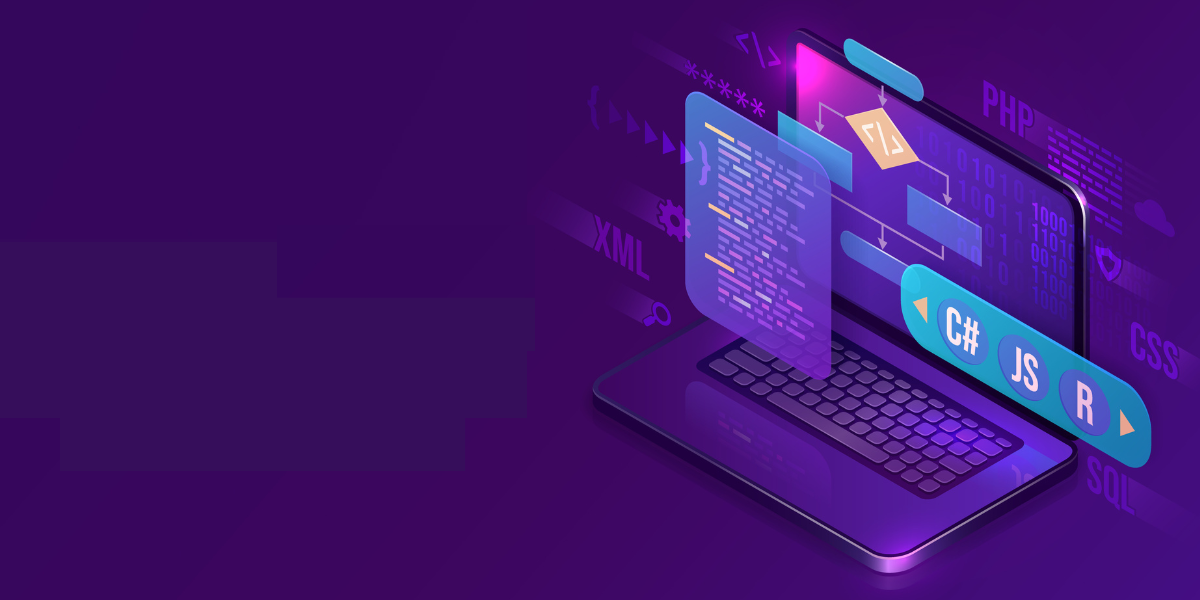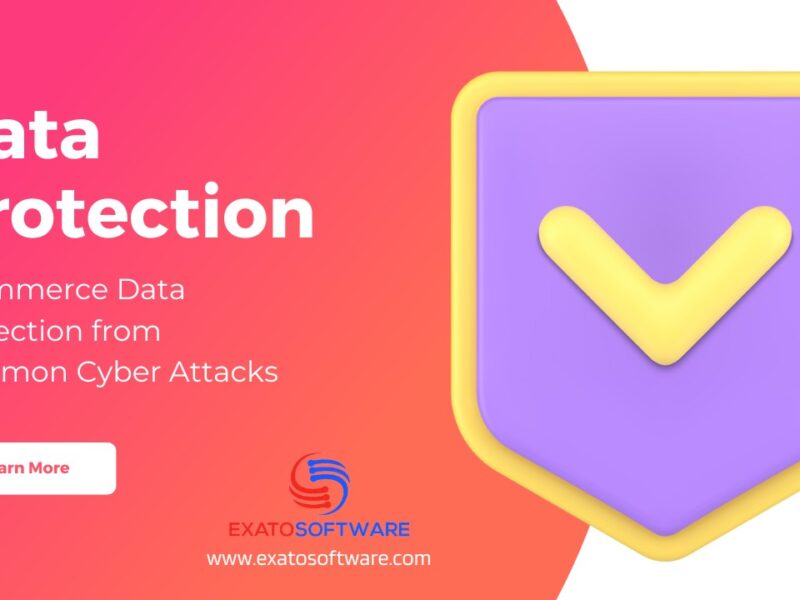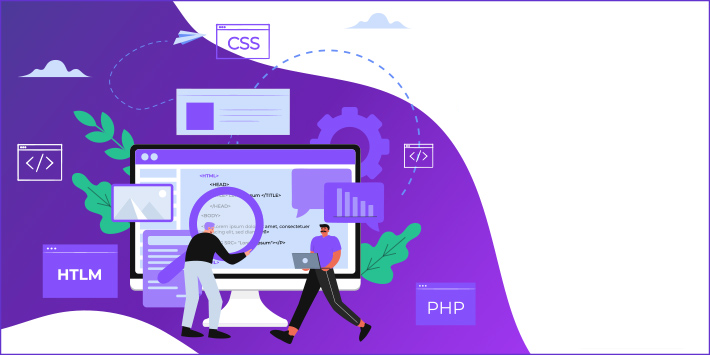Full stack development is an approach towards software design and programming that integrates front-end and back-end technology and layered programming practices in a close tandem.
It has become a crucial component of the software development business. Full-stack developers must stay current on the most cutting-edge business trends and technologies that are now being developed as 2023 draws near. This blog post will examine seven full-stack development trends essential to watch in 2023. Some of the tendencies in this category include serverless computing, advanced web applications (PWA), blockchain technology, low-code and no-code development, artificial intelligence and machine learning, and cloud computing. Before becoming familiar with the Full Stack Development trends let’s know about Full Stack Development in detail.
What is Full Stack Development?
Full stack development is the planning, creation, and maintenance of a software program’s client-side (also known as the front end) and server-side (sometimes known as the back end) components. One skilled at creating different application layers, such as the presentation layer (also known as the user interface), the business logic layer, and the database layer, is a full-stack developer.
Tasks like the user interface design, the implementation of interactive elements, and the assurance of an unbroken user experience are completed during the front-end development phase of a typical full-stack development scenario. This is achieved by combining technologies like HTML, CSS, and JavaScript with various front-end frameworks like React, Angular, or Vue.js. If you are searching for the best full-stack development company in USA, hen network with Exato Software to hire dedicated full-stack developers.
Role and Duties of Full Stack Developers
Working with server-side frameworks and technologies, full-stack engineers handle the back end of the application’s data processing, server management, and implementation of business logic. They work with programming languages like Java, Python, Ruby, or Node.js and frameworks like Django, Express.js, or Ruby on Rails. The administration of server-side activities, the implementation of APIs, the integration of the application with databases, and the assurance of the application’s overall functionality and performance are all included in the back-end development of an application.
In addition to such duties, full-stack engineers also handle data, work with databases, and perform front- and back-end programming. By communicating with database systems like MongoDB, MySQL, PostgreSQL, or Oracle, they maintain efficient data structures, handle data storage, conduct queries, or manipulate data.
Skillset and Proficiency of Full Stack Developers
Full-stack developers must possess many abilities and in-depth knowledge of front-end and back-end technologies. To deliver a comprehensive and practical solution, they should be able to operate on multiple layers of an application and seamlessly combine various components. Full-stack developers are better equipped to address challenges as they arise and provide end-to-end solutions by having a comprehensive understanding of the entire application stack. Multi-tier development is another name for full stack development.
Due to their proficiency in front-end and back-end development, full-stack developers can manage projects independently, contribute to various stages of development, and work effectively with members of specialized teams, such as UI/UX designers, back-end developers, database administrators, and system administrators. Full-stack developers possess front-end and back-end development skills. They are crucial members of contemporary software development teams due to their wide range of talents and ability to work across different levels of development. So, hire dedicated full-stack developers from ExatoSoftware Full-Stack development company in USA.
The seven full-stack development trends listed below are ones you must not miss in 2023:
Cloud computing
The cloud computing industry has changed how programs are created and deployed. Its importance is anticipated to have grown even further by 2023. Full-stack development companies need to completely understand cloud computing platforms and services like Amazon Web Services (AWS), Microsoft Azure, and Google Cloud Platform (GCP). Using this knowledge, developers will be able to efficiently install, operate, and grow apps inside the cloud computing environment. Adopting cloud computing offers the path for improved application development process adaptability, scalability, and cost-efficiency.
Full-stack engineers must embrace cloud-native technologies and architectures like containers and serverless computing. Software and its dependencies on it can be packaged into portable, independent components through the use of containerization, ensuring consistency in a range of environments. Contrarily, serverless computing frees developers from the hassles of provisioning, scaling, and maintaining servers so they may focus exclusively on developing code. When full-stack developers use the cloud’s capabilities, they can build scalable, highly available, and resilient applications.
No Code Development:
The emergence of low-code and no-code development platforms has increased the power of citizen developers and sped up the software development process. Using low-code or no-code tools, developers can create apps with visual interfaces and drag-and-drop components without writing as much code as they would with conventional tools. This method enables shorter development cycles and promotes cooperation between technically focused stakeholders and those who are not. To effectively utilize the capabilities of low-code and no-code platforms and deliver solutions more quickly, full stack development companies in USA must thoroughly understand them.
People with a wide range of technical expertise can participate in the development process thanks to low-code and no-code development platforms. These platforms enable users to construct applications because they feature graphical user interfaces, pre-built components, and drag-and-drop functionality quickly. Low-code and no-code development will gain even greater acceptance in 2023, enabling citizen developers to contribute to application development, relieving pressure on conventional development teams, and accelerating the time it takes to launch new products. To ensure smooth integration and maintain the quality of their work, full-stack developers need to become familiar with these platforms and learn how to collaborate with citizen developers.
Full stack development services must familiarize themselves with these platforms and collaborate effectively with citizen developers to ensure seamless integration and maintain code quality.
Artificial Intelligence and Machine Learning
Full-stack developers must expand their artificial intelligence and machine learning skills to produce intelligent, data-driven solutions in 2023. A thorough understanding of machine learning algorithms, frameworks, and libraries will be necessary to create applications that can analyze huge datasets, extract insights, make predictions, and automate operations. Developers must also be familiar with natural language processing (NLP) and computer vision techniques to build apps with advanced features like sentiment analysis, photo recognition, and recommendation systems.
Artificial intelligence and machine learning have already impacted various industries, and in 2023, their influence on full-stack development will only grow. This forecast is supported by research that indicates full stack development will be significantly impacted by AI and ML by the year 2023. Developers can also create flexible, data-driven and intelligent solutions when ML and AL capabilities are inclusive of application development. For full-stack developers, having a solid grasp of AI and ML principles, frameworks, and libraries is essential. Developers who are proficient in tools like TensorFlow, PyTorch, and sci-kit-learn will be able to build sophisticated programs that can learn, automate procedures, and make predictions.
DevOps
Full-stack engineers must adopt a DevOps methodology that prioritizes collaboration, automation, and the provision of continuous updates. Developing trustworthy CI/CD pipelines, using infrastructure as code (IaC) technologies like Terraform or Ansible, and adopting automated testing frameworks will be crucial. By seamlessly integrating development and operations, full-stack developers can ensure quicker feedback cycles, better product quality, and a quicker time to market.
In the year 2023, DevOps practices, which aim to close the gap between development teams and operations teams, will be crucial. The fluid collaboration between these two domains enables continuous integration, delivery, and deployment. DevOps guidelines must be followed, and full-stack engineers must be well-versed in applications like Jenkins, Docker, and Kubernetes. A firm grasp of infrastructure automation, version control, and automated testing is crucial for quicker development cycles, improved quality, and effective application deployment.
Progressive Online Apps (PWA):
By fusing the best elements of online and mobile applications, Progressive Web Apps (PWA) provide a native app-like experience across devices. PWAs blend the best elements of mobile and online applications. PWA development is a crucial skill for full stack development companies in USA, who need to be adept at using tools like service workers and app manifests. Regardless of their platform, PWAs give developers the power to guarantee that their applications are usable, responsive, and accessible.
One factor contributing to the surge in popularity of these apps is their capacity to deliver a user experience comparable to that of a native app across different platforms. In 2023, PWAs will be even more crucial as companies work to provide consistent user experiences across web browsers, mobile devices, and even offline scenarios. Progressive web apps (PWAs) should be the focus of full-stack developers as they use emerging web technologies like service workers and app manifests to build them. Users can add programs to their home screens, enable offline caching, and sync using these technologies. Progressive web apps (PWAs) allow developers to give users more engaging experiences, increased accessibility, and faster loading times.
Blockchain:
The decentralized and secure blockchain technology has revolutionized several industries, including finance, healthcare, and supply chain management. In 2023, full-stack development services will continue to be significantly impacted by blockchain technology. The fundamentals of blockchain, creating smart contracts, and understanding the structure of decentralized applications (DApps) are all subjects that developers need to be knowledgeable about. Building applications that improve security and trust requires knowledge of blockchain technologies like Ethereum and Hyperledger Fabric. These platforms enable the development of transparent, auditable, and tamper-proof applications.
Blockchain, a distributed ledger technology, continues to disrupt a wide range of industries by providing open-source, decentralized, and reliable solutions. In 2023, full-stack application developers should look into the advantages of smart contracts and blockchain technology. They must know how decentralized apps are created on blockchain platforms like Ethereum or Hyperledger. Blockchain technology’s integration into full-stack development paves the path for developing trustworthy systems, secure transactions, and unchangeable records. Understanding the underlying concepts, cryptography, and consensus procedures will be crucial for building blockchain applications that are both dependable and scalable.
Server Computing
Programmers are free to focus solely on coding their applications using serverless computing, also known as Function as a Service (FaaS), instead of needing to manage the underlying infrastructure or servers. The emergence of serverless computing will substantially impact the full-stack development trends in 2023. AWS Lambda and Microsoft Azure Functions are two serverless technologies that full-stack developers should become familiar with. Using serverless architecture, developers may create event-driven systems that automatically scale based on demand. Cost reductions and increased production are the outcomes of this.
Programmers are freed by serverless computing to focus on the logic at the core of their applications rather than the framework on which those programs are based. It lowers the complexity of operating chores and enables the quick construction and deployment of microservices, which increases scalability. Full-stack engineers must be well-versed in serverless concepts, event-driven architectures, and cloud provider-specific services like API Gateway and Event Grid by 2023.

Final words
Full-stack developers must constantly stay updated on the rapidly evolving trends and technologies driving the industry as 2023 draws nearer. Some major trends that cannot be overlooked are cloud computing, low-code and no-code application development, AI and machine learning, DevOps, serverless computing, progressive web apps, and blockchain technology. If full-stack developers adopt these trends, they may use the cloud’s capabilities, shorten development cycles, build intelligent, user-centric applications, ensure secure transactions, and optimize resource usage. We at ExatoSoftware one of the best full-stack development company in USA, Australia, UK, UAE, and India to hire dedicated resources in Full Stack Development.



